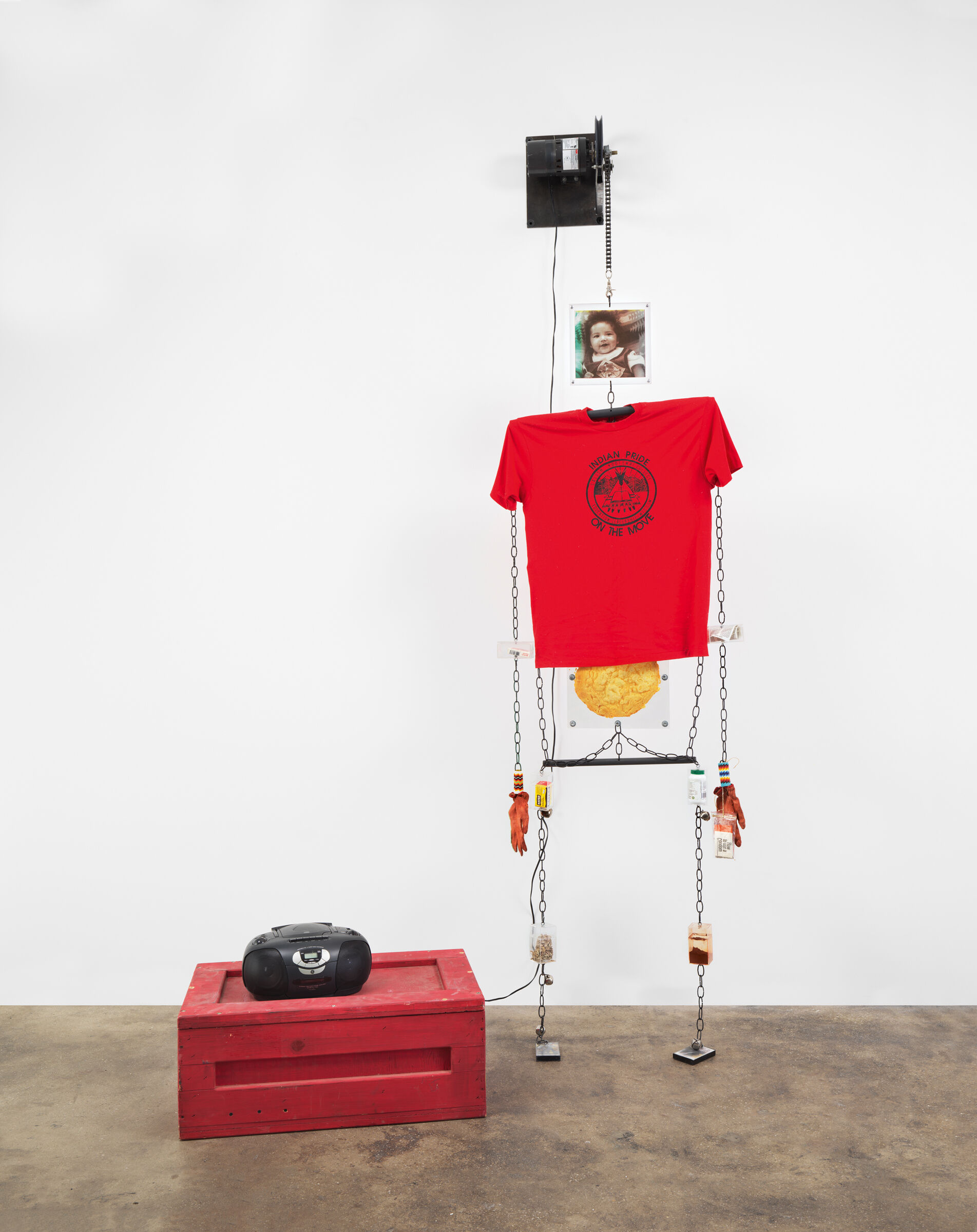Memorializing Monuments
Throughout Jaune Quick-to-See Smith’s life, she has passionately advanced Native American social, political, and environmental causes. Smith, an enrolled Salish member of the Confederated Salish and Kootenai Nation, in Montana, collaborated with Neal Ambrose-Smith, her son, to make the mixed-media sculpture Warrior for the 21st Century. The figurative work has a photograph of Smith’s first grandson face, an Indian Pride T-shirt, a frybread stomach, beadwork, and chain extremities, among other objects. It moves to sounds while a voice counts in the Salish language.
The sculpture includes reference to the 1855 Treaty of Hellgate between the United States government and the Salish, Pend d'Oreille, and Kootenai, which pushed the Indigenous communities to cede their territories, establishing the Confederated Salish and Kootenai Nation reservation lands where Smith was born. It also includes the Indian AIDS Hotline telephone number, calling attention to the increasing rates of HIV and AIDS in Indigenous communities at the time the work was created.
As Neal Ambrose-Smith expresses, it has “what every warrior needs.” And, Smith elucidates, “So much of what we see in the media leads us to believe that Indians are either…vanishing and dead, or that we are romantic visions. Neither of which is true.”
Activity
“This is my lineage, my heritage, these are my antecedents, that have impacted my world view and that cause me to do the work that I’ve done most of my adult life. . . . This is what it’s all about. And in the end, this comes back to feed my art.”
–Jaune Quick-to-See Smith
How would you represent something or someone important to you?
Jaune Quick-to-See Smith uses her artworks as a method to teach the public about Native American culture, histories, and current issues. Her collaborative sculpture with Neal Ambrose-Smith speaks to their personal identities, cultural misperceptions, overlooked chronicles and indigenous contemporaneity. As Smith describes, “I yearn for the day when Native history is taught in public schools across the nation. The only state that teaches Native American history and current life in the public school curriculum is Montana. This is a shocking fact.”
Have students think about something or someone of great significance to them and that they want to make sure is accurately remembered by others for years to come. Ask them to consider what symbols or objects could represent their chosen subjects. Encourage students to reflect on the arrangement of their symbols or objects so that others might understand the meanings they want to convey through them. Invite them to experiment with an array of materials such as drawing, painting, collage, assemblage, photography, video, etc. Display the artworks in a shared space in the school so that many classes can experience the artworks. Urge students to investigate how their peers comprehend their symbolic creations.

